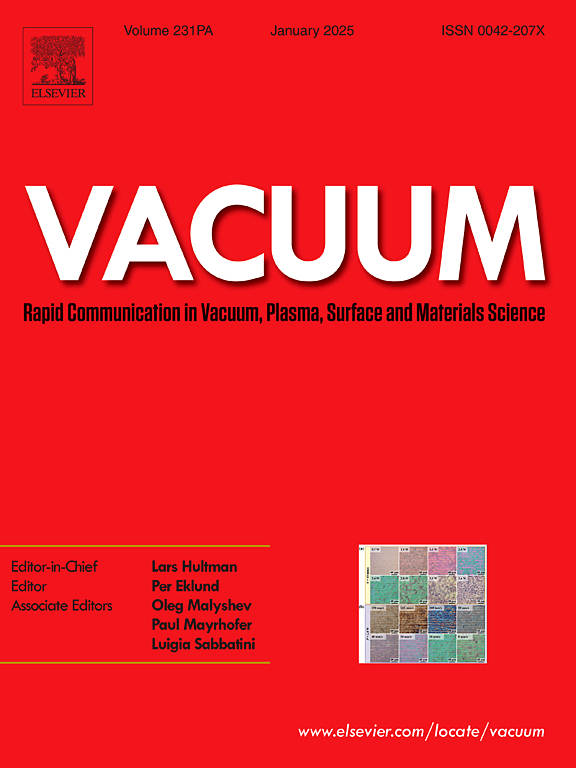Design a self-reinforcement buffer layer to assist braze SiC and Nb with Cu-xTiH2 filler alloy
IF 3.8
2区 材料科学
Q2 MATERIALS SCIENCE, MULTIDISCIPLINARY
引用次数: 0
Abstract
A buffer layer was designed to assist to braze SiC and Nb. The effect of brazing temperature and holding time on the microstructure and the shear strength of the joint was analyzed. The strengthening mechanism of the joint was evaluated. The results found that the SiC-Nb joint was brazed with Cu-5TiH2, because of its good wettability on the surface of SiC. The typical microstructure of SiC-Nb joint brazed at 1060 °C for 5 min was SiC/C particles + TiC + Cu(s,s)/α-Ti + Nb(s,s)/Cu(s,s)+(Ti,Nb)5Si3+Ti5Si3/α-Ti/(Ti,Nb)Si/Nb. In addition, a buffer layer formed, which was consisted of two parts: reaction layer (α-Ti + Nb(s,s)) and infiltration layer (much C particles, little TiC and Cu(s,s)). With brazing temperature and holding time increasing, element Nb continuously diffused into brazing seam and solidified into α-Ti. With Nb content increasing, the α-Ti existed in the form of discontinuous to continuous layer, and then to particles. When Nb solidified into α-Ti continuous layer, the strength of the layer was improved and effective joining between SiC and Nb formed. In addition, the buffer layer was contributed to forming a good gradient transition of coefficient of thermal expansion (CTE), and released residual stress. So, the shear strength of the joint was increased to 52.6 MPa.
设计一种自强化缓冲层,以辅助碳化硅和铌与铜-xTiH2 填充合金的钎焊
设计了一个缓冲层来辅助钎焊碳化硅和铌。分析了钎焊温度和保温时间对接头微观结构和剪切强度的影响。对接头的强化机制进行了评估。结果发现,SiC-Nb 接头采用 Cu-5TiH2 进行钎焊,因为 Cu-5TiH2 在 SiC 表面具有良好的润湿性。在 1060 °C 下钎焊 5 分钟的 SiC-Nb 接头的典型微观结构为 SiC/C 颗粒 + TiC + Cu(s,s)/α-Ti + Nb(s,s)/Cu(s,s)+(Ti,Nb)5Si3+Ti5Si3/α-Ti/(Ti,Nb)Si/Nb 。此外,还形成了缓冲层,缓冲层由两部分组成:反应层(α-Ti + Nb(s,s))和浸润层(大量 C 粒子,少量 TiC 和 Cu(s,s))。随着钎焊温度和保温时间的增加,Nb 元素不断扩散到钎缝中,并凝固成 α-Ti。随着铌含量的增加,α-钛以不连续层到连续层,再到颗粒的形式存在。当铌凝固成α-钛连续层时,α-钛连续层的强度得到提高,SiC 和铌之间形成了有效的连接。此外,缓冲层还有助于形成良好的热膨胀系数(CTE)梯度转变,并释放残余应力。因此,接头的剪切强度提高到了 52.6 兆帕。
本文章由计算机程序翻译,如有差异,请以英文原文为准。
求助全文
约1分钟内获得全文
求助全文
来源期刊

Vacuum
工程技术-材料科学:综合
CiteScore
6.80
自引率
17.50%
发文量
0
审稿时长
34 days
期刊介绍:
Vacuum is an international rapid publications journal with a focus on short communication. All papers are peer-reviewed, with the review process for short communication geared towards very fast turnaround times. The journal also published full research papers, thematic issues and selected papers from leading conferences.
A report in Vacuum should represent a major advance in an area that involves a controlled environment at pressures of one atmosphere or below.
The scope of the journal includes:
1. Vacuum; original developments in vacuum pumping and instrumentation, vacuum measurement, vacuum gas dynamics, gas-surface interactions, surface treatment for UHV applications and low outgassing, vacuum melting, sintering, and vacuum metrology. Technology and solutions for large-scale facilities (e.g., particle accelerators and fusion devices). New instrumentation ( e.g., detectors and electron microscopes).
2. Plasma science; advances in PVD, CVD, plasma-assisted CVD, ion sources, deposition processes and analysis.
3. Surface science; surface engineering, surface chemistry, surface analysis, crystal growth, ion-surface interactions and etching, nanometer-scale processing, surface modification.
4. Materials science; novel functional or structural materials. Metals, ceramics, and polymers. Experiments, simulations, and modelling for understanding structure-property relationships. Thin films and coatings. Nanostructures and ion implantation.
 求助内容:
求助内容: 应助结果提醒方式:
应助结果提醒方式:


